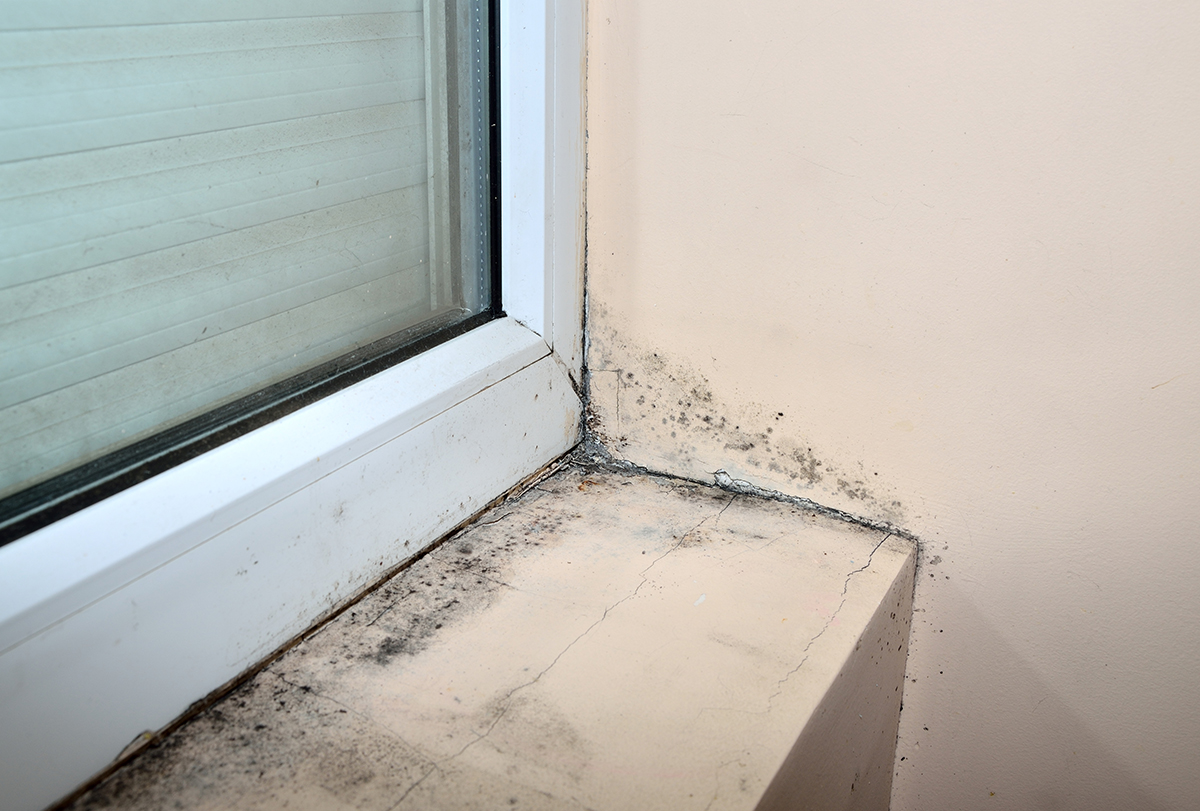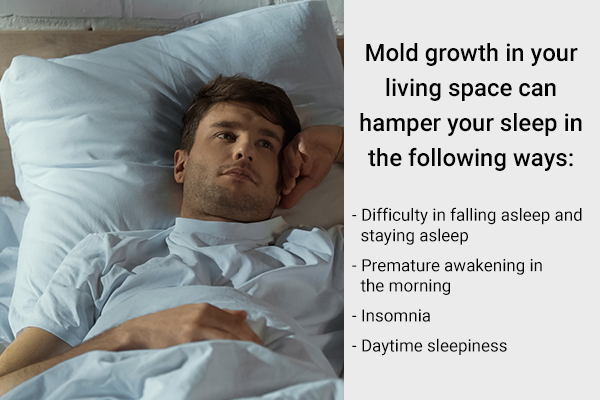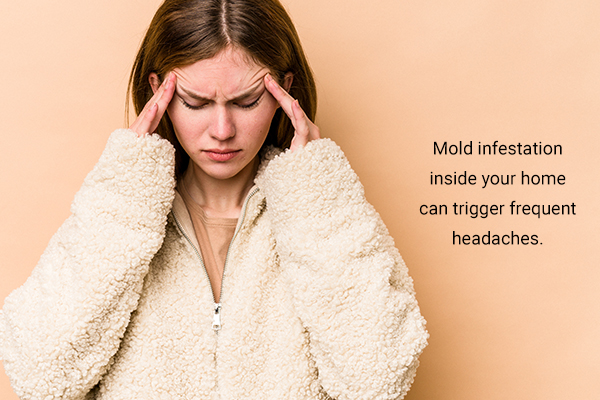In this article:
Molds are fungi that thrive in warm, damp, and humid environments. Many species of mold disperse and reproduce by creating spores that can outlive even pretty brutal environmental conditions.

According to the Centers for Disease Control and Prevention (CDC), the most typical types of indoor molds include the Cladosporium, Penicillium, Alternaria, and Aspergillus genera.
The CDC also shared that any area with a relative humidity of more than 80% and the presence of organic materials supports mold development. In fact, a relative humidity greater than 90% is outstanding for mold proliferation.
The World Health Organization (WHO) has estimated that 10%–50% of indoor environments in countries such as Europe, North America, Australia, India, and Japan have substantially notable mold troubles.
Not all molds are toxic, but some of them are toxigenic, which means that they are capable of producing toxins, particularly mycotoxins. Not all fungi produce these mycotoxins, and even those who do fail to do so until provided with suitable environmental conditions. The most dangerous mold is Stachybotrys chartarum.
The CDC explains that mold growth can be of various colors and usually smells musty. Color is, however, not a hint of how dangerous a mold may be contrary to the popular belief that only black molds are toxic. Any mold growth should be properly dealt with. (1)(2)(3)
Take a look at the various health issues caused by mold toxicity and how to prevent them.
Hidden Dangers of Toxic Mold Exposure
Mold exposure around your home can lead to the following health complications.
1. Allergies
Many studies have shown consistent associations between indoor mold growth and allergic health. If you’re sensitive to mold spores, breathing them in can cause your immune system to overreact.
The symptoms can include:
- Itchy eyes
- Coughing
- Sneezing
- Runny nose
- Dry skin
Symptoms of mold allergy can vary from one person to another. They can be chronic or only flare up during certain times of the year.
More serious symptoms such as fever, shortness of breath, and lung infections may happen due to exposure to mold in those who suffer from health issues that can lead to a weak immune system. Children who are exposed to mold in the early years of their life may have an inflated chance of developing asthma. (4)(5)
A majority of people exposed to molds complained of allergic skin reactions. These included inflammations of the skin and a wheal-and-flare reaction. (4)
2. Sleep problems

Exposure to mold or dampness at home has been associated with sleep problems and insomnia in children and adults.
According to a study, there is an increased risk of various sleep problems in those exposed to visible mold or dampness at home. Data suggest that visible mold negatively influences your sleep with issues such as:
- Difficulty maintaining sleep
- Early morning awakening
- Insomnia symptoms
- Difficulty initiating sleep
- Excessive daytime sleepiness
However, the reason for the association of sleep impairment with mold is unclear. One possible explanation for this can be mold odor.
Fungi can produce volatile chemicals that have a pungent smell. High amounts of these compounds can irritate your airways and cause nasal inflammation, which can deteriorate your sleep quality. This is because nasal obstruction is a risk factor for sleep issues. (6)
3. Depression
There have been reports about the association between moldy dwellings and the risk of depression. Further research suggested that dampness or mold in the home can be positively associated with depression.
The reason hypothesized by experts for this psychological response to mold is the increasing financial and personal stress of keeping your house clean or the mental burden of having poor housing facilities.
Furthermore, health problems arising from moldy surroundings can make a person feel depressed and anxious. (7)
4. Headaches

The chances of getting frequent headaches are high if you live in a home infested by molds.
Studies have shown that molds produce lethal mycotoxins, which are biologically active compounds that can cause physiological and pathological changes in your body that can lead to neuropsychological symptoms such as headaches. (8)
5. Memory loss
People who spend a lot of time in moldy areas suffer from multiple health issues such as respiratory difficulties, fatigue, joint pain, anxiety, and cognitive problems such as memory loss.
In one study, neurologists were not able to distinguish people with prolonged exposure to mold from people with mild to moderate brain injury as they had identical cognitive deficits.
The body’s immune response to mold leads to immune system activation in the brain, leading to a loss of newly formed hippocampal neurons. This may result in impairment of hippocampal-dependent learning and memory. (9)
6. Respiratory tract infections
Several studies have shown the relationship between home dampness, mold growth, and respiratory issues such as asthma. These studies showcase the significance of dampness in the development of airway symptoms such as coughing, wheezing, and asthma.
Although more research is required to conclude the causal relationship between indoor mold exposure and asthma, (10) in various qualitative reviews, dampness and mold have been associated with a variety of adverse respiratory health effects.
Research has concluded there is a substantial and statistically significant increase in respiratory infections and problems such as bronchitis because of mold. (11)
Tips to Prevent Mold Infestation
Here are some ways to prevent mold infestation and to keep yourself protected from mold toxicity: (1)(5)

- Wear gloves and protective eyewear to keep yourself safe while cleaning molds.
- Mold growth can be cleaned by using a bleach solution.
- Keep humidity levels between 30% and 50%.
- Use proper air conditioning or a dehumidifier during the humid months.
- Keep your rooms decluttered.
- Clean and replace air conditioner filters regularly.
- Dry wet clothes and items properly in the sun.
- Prevent leaks by proper water drainage.
- Use exhaust fans in the kitchen and bathroom.
- Do not carpet areas such as bathrooms or other rooms with a lot of moisture.
Precautions Against Mold
Here are some additional precautionary measures suggested by experts:
- Avoid areas where mold is frequently located, such as compost heaps and piles of dead leaves.
- Wear a face mask in dusty areas, and if you live in an endemic location, use an air purifier at home.
- People with diabetes and chronic alcoholism can have excess sugar in the urine, molds in a washroom may use this sugar as food, and so people with diabetes and who are regular alcohol drinkers can get more exposure to mold in the bathroom, so be aware of that.
When to See a Doctor
You should not let infections from molds get worse. And get proper medical care from a healthcare professional.
The following conditions are red flags and require immediate medical attention:
- A lung condition that’s getting worse or difficult to manage with the usual treatment
- Cough that holds up for more than 3 weeks as well as a weakened immune system
Most-Asked Questions About Mold Exposure
Who is most at risk of health problems associated with exposure to mold?
The following subsets of people are prone to health problems associated with mold exposure:
- People with allergies
- People with immune suppression
- People with lung diseases
- People with chronic respiratory diseases
How do I test for mold?
You can test for mold at home by following these steps:
- Look for spots on walls or furniture that indicate mold growth. These can be black, green, brown, white, or other colored spots with a musty odor.
- Mix bleach with equal parts of water to dilute it.
- Dab a few drops of this diluted bleach on the affected areas or spots you’ve discovered.
- Wait for a few minutes and observe the spot carefully.
- If the spots lighten quite quickly or keep reappearing even after disappearing, you can assume it to be mold.
You can also buy a mold test kit. However, the US Environmental Protection Agency does not encourage the use of home mold testing kits. They, instead, urge people to get their house tested for molds by professionals if they think their house has mold infestation.
If you do decide to use home testing kits to confirm your suspicion, it is still better to have professionals remove mold from your house.
What is the most common infection caused by mold?

The most common infection is aspergillosis, which is a condition caused by the aspergillus mold. There are several different types of aspergillosis. Most affect the lungs and cause breathing difficulties, and major symptoms include cough and shortness of breath.
The mode of transmission is inhalation of tiny bits of mold, mostly in places such as: (12)(13)
- Near plants, trees, and crops
- Near soil, compost, and rotting leaves
- In damp buildings
Note: It is crucial to understand that you cannot catch aspergillosis from someone else or from animals.
Who are at risk?
- Those who have had tuberculosis in the past
- Those with chronic obstructive pulmonary disease (COPD)
- Those with a weak immune system, such as people who have HIV/AIDS, those who have undergone renal or other transplants, and those on chemotherapy
What are the diagnostic tests for mold infection?
- Tests on a sample of mucus
- Allergy tests
- Bronchoscopy, if needed
Final Word
Mold is a term commonly used for many types of fungi. For active mold growth, moisture is required.
Mold growth can have a negative impact on your health. It can cause a diminished quality of life in people who spend time in mold-infested places. If you have mold in your home and have been feeling ill, seek medical care for proper diagnosis and treatment.
- Was this article helpful?
- YES, THANKS!NOT REALLY


